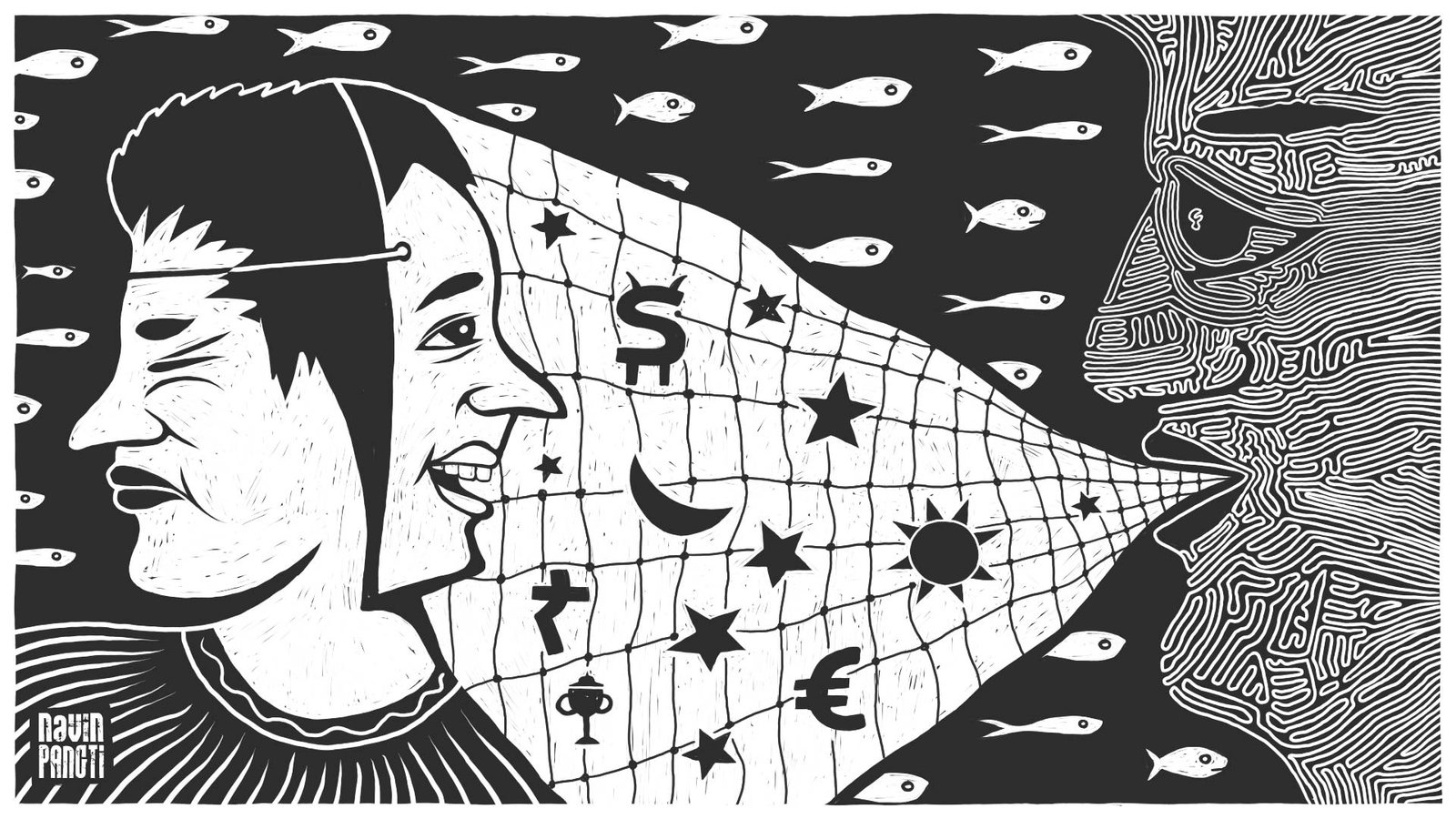The speculative design trap
Creative professionals often come across situations where they are asked to create ‘something’ for ‘free’ so that the project can been awarded to them. Such speculative design exercise is a trap not just for the service providers but also the customers.
But hardly anyone seems to care. Lots of Indian companies, big or small, and the government agencies, conduct this exercise with multiple service providers as a matter of practice. The designers who initially resist the practice eventually fall in line when they are able to afford rookies who can execute their ideas. They happily call it a ‘pre-sales activity’. Even the design firms who rant about the practice happily adopt it when it comes to outsourcing work to independent designers.
The practice is illogical and exploitative, but it lingers on. I think monoliths do this because they have inherited it as a legacy. It serves as yet-another-process put in place to ‘justify’ a decision. ‘Justify’ is the key word here. The word ‘owing a decision’ has little space in corporate parlance. Want-to-be-monoliths do it to simply feel like the herd.
Please do not see this as a rant of a person involved with design for well over two decades. I may have used some not-so-soft language but that is because I need to firmly and clearly state my point of view about a pathetic work culture that seems to go on and on. I oppose this practice not just because it harms the service providers but also because it adversely affects the customers. When the customer is the government, one of the biggest subscribers of this practice, it adversely impacts the citizens of this country.

The fact that this is an unreasonable practice is also amply proven by the fact that most customers have to ‘sell’ the idea of speculative design with spiels like-
- Working with us will take you to the next league
- Personally I like your work and want to engage with you but I also got to take other team members into confidence
- We are taking the market head-on with our disruptive technology and want you to be our partner in crime. But for that you need to give us some leverage to begin with.
- This is an opportunity that will open your window to the Silicon valley.
- Let us start with something small before getting into a real long term relationship which will benefits both the parties.
- We really like your work approach but you guys have not done anything in our vertical so we got to see something before proceeding further.
- I know you guys are fully capable of coming up with something great in no time at all. So just help me help you. It would be worth the effort.
- Sadly, that is how government works. My hands are tied. But you know that this is for the greater good of everyone.
Some individuals and entrepreneurs also justify these actions with ‘lack of funds’ logic, stating that they would ‘pay well’ when they get ‘funded’. But that rarely happens.
I do not understand why it is so hard for Indian customers to realise that their interventions are meant to provide solutions – a communication solution, a business solution, a design solution, etc. The objectives of such interventions are a part and parcel of the business proposition that triggered the intervention at the first place. At the end of the day, the solution has to address some specific needs and meet some pre-defined goals. Speculative design does not prove anything – neither that the solution is a step in the right direction, nor that the designer is capable.
What I find funny is that every customer wants to be a trendsetter without realizing that to set trends one needs a lot of courage and some serious decision making. And to do that one has to dig deeper into how a design solution meets their business needs – from the customer as well as end consumer point of view. The visual aspects of design also needs to be evaluated with respect to various usage scenarios, socio-cultural contexts, processes involved or impacted, visual language of the sector, aspects of production, technology constraints, etc. A peppy mock-up garnished with jargons does not help this cause.
A lot of popular aesthetic sentiments are driven by elements used in artefacts created for customer persuasion, advertisement for instance. Popular aesthetics is also derived by contemporary trends, aesthetics preferences of successful companies, etc. There is a high chance that the designer of the speculative work will play along these sentiments alone, in the absence of any other reference point. The customer would be ‘pleasantly surprised’ by the outcome and may happily make a wrong choice without ever realizing that just like design of business processes, products, service offerings, supply chains, strategy… creative design is also a process. Every design decision has a basis. One thought leads to another and slowly a ‘solution’ emerges. More than ‘wow’, it is about being wonderfully viable.
This leads us to another important question – how much should a designer know about the customer business to offer a viable design solution? The simplest answer is – enough to have a logical discussion! That is the basic minimum needed to come up with a viable solution. What this means is that the designer should know what the customer business is all about, the current state of affairs and where the customer is heading or planning to go. The designer needs to be capable of not just understanding this but also digesting it well so that one can logically discuss various design approaches and take decisions based on viability of a design and not based on popular practices and design trends.
Most of the solutions that require design intervention are not just about design per se. There are lots of other capabilities that a service provider needs to have in order to realize a design. Influenced by the design mock-up and a jargonized slide presentation, there is a high chance of overlooking other important and critical aspects.
Another downside of speculative design approach is that many designers and design firms would not pitch for such work. Look at it from the perspective of crowdsourced design contests and you would understand what I am talking about. Due to speculative design approach many customers may be missing out on a lot of decent folks from the design industry.
The speculative design practice also fails the basic philosophy that guides design interventions. Ask any designer worth his or her salt and they will tell you that ‘form’ intrinsically follow the ‘function’. What this essentially means is that the design is not an exercise of creating a stunning visual form but about evolving an aesthetic perspective which aligns well with the ‘soul’ of the offerings and the sensibilities of the end users. Yes, it can be stunning to look at. But ‘stunning’ alone does not make any business sense.
Hence, to realise the ‘soul’ of an offering, one needs to understand the ‘soul’ in detail. A designer should not be struggling to answer basic questions like – what are we making, why are we making what we are making, for whom are we making what we are making, and so on.
I can see almost every customer empathically shaking his or her head in agreement but I find it tough to visualize a scenario where they would happily refrain from engaging in speculative design practices. Why not? Because a change in practice demands time and commitment not just from the designers, but also from the customers! In many ways, this has become a behavioral issue of sorts.
So what is the solution?
Simple! Work harder!
The customers need to talk to the design team about their philosophy and solution approaches. Both of them need to ask as many questions to each other as possible to understand the thought processes involved. They can have a look at past works to understand each other’s aesthetic sensibility, while keeping in mind that the past projects do not merely reflect the aesthetic sensibility of the design team but also of the customers for whom those designs were made. After all, a design is only as good as the customer!
In the fast changing business and technology landscape, it is imperative that a designer is able to comprehend various aspects of business, is not only able to ideate but also articulate it well, and is able to handle tools which help him/her realize the idea into a working solution, even if he/she is not personally using those tools. One also needs to always remember that the success of every intervention, no matter how ‘creative’, is not about the ‘wow’s but about the return on investments!
Simply put, no matter what, the solution has to work!














